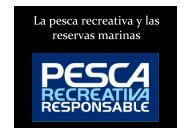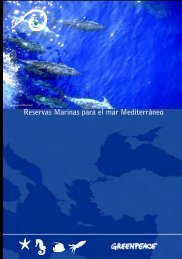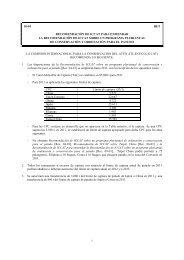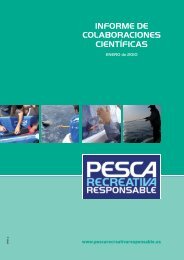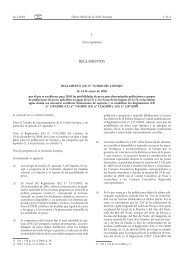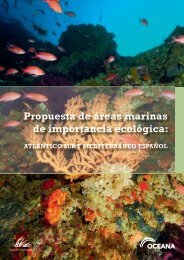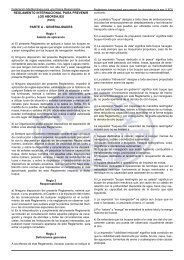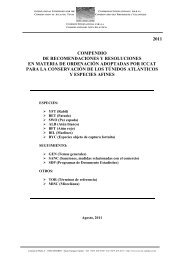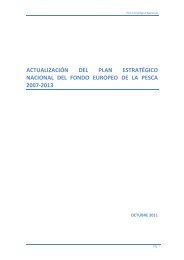C. hippurus - Confederación Española de Pesca Recreativa ...
C. hippurus - Confederación Española de Pesca Recreativa ...
C. hippurus - Confederación Española de Pesca Recreativa ...
You also want an ePaper? Increase the reach of your titles
YUMPU automatically turns print PDFs into web optimized ePapers that Google loves.
Tagging research programs on Dolphinfish<br />
The USA Marine Resources Division of the South Carolina Department of Natural<br />
Resources (SCDNR) initiated a study on Dolphinfish in 2002 adopting a tagging program<br />
in collaboration with the recreational anglers (http://www.dolphintagging.com). The<br />
Tagging Study is a scientific research project conducted to the fishermen with the aim of<br />
establishing the temporal and spatial occurrence, movement patterns and essential habitat<br />
of the species in the USA territorial waters, Gulf of Mexico, Western North Atlantic and<br />
Caribbean Sea. It is also inten<strong>de</strong>d to foster more research on the biology and behaviour<br />
of Dolphinfish. The program has been extremely successful, having more than 11,000<br />
fish marked with the majority released along the U.S. Atlantic coast.<br />
2005 SPECIAL RECAPTURE MAPS 2010 RECAPTURES MAP<br />
Dolphinfish tagged off the U.S. East Coast have travelled to southern Azores Islands in<br />
the Eastern North Atlantic, Puerto Rico, Antigua, St. Kitts, Venezuela, Mexico and Cuba.<br />
The Confe<strong>de</strong>ración Española <strong>de</strong> <strong>Pesca</strong> <strong>Recreativa</strong> Responsable is associated to this<br />
tagging program and could be an important contributor to this activity in Spain.<br />
5. Some conclusions and recommendations<br />
Recreational fisheries targeting Dolphinfish in western Mediterranean are an<br />
important annual activity for anglers based in several ports of Balearic Islands,<br />
Catalonia, Valencia and north of Cabo <strong>de</strong> Gata in Spain.<br />
The total catch and the number of anglers involved in the capture of this species in<br />
Spain are unknown at present.<br />
Web pages of professionals and digital fora on recreational fisheries are an important<br />
source of information related to the biology, distribution, fishing periods and fishing<br />
zones, weight and sizes, production, fishing methods and environmental variables<br />
(fishing <strong>de</strong>pths, sea state, winds, etc).<br />
Registers from National and International competitions could be a source of<br />
information on Dolphinfish.<br />
Information provi<strong>de</strong>d by recreational fishers could be incorporated to a data base of<br />
the Spanish recreational Dolphinfish fishery.<br />
Catch occurs from January to December in coastal and offshore areas with peaks of<br />
captures during the end of the summer and autumn.<br />
Dolphinfish average length composition in Spanish Mediterranean waters increase from<br />
April-May until the end of October.<br />
Target sizes (>1Kg) disappear in some areas in November.<br />
6




